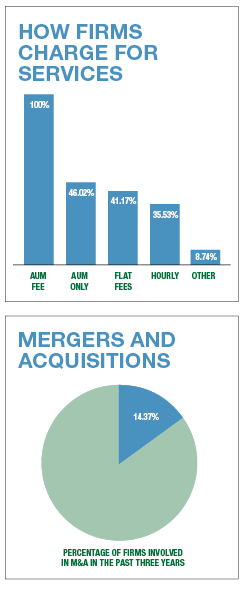Rebalancing Act
Cincinnati-based Truepoint Inc. earned its billion dollar AUM stripes last year, mostly from client referrals and help from local attorneys. But the firm also got a big shot in the arm in November when the Wall Street Journal wrote about the wealth manager and examined its investment strategy-one whose orthodoxy looks quite unorthodox. At a time when many managers are criticizing modern portfolio theory and asset allocation, Truepoint founder and CEO Michael Chasnoff says the firm's performance has been jockeying among top decile Morningstar managers using a deceptively simple idea: rebalance, rebalance, rebalance.
"We hold an investment philosophy that begins with the concept that the future is unknowable," says Chasnoff, "therefore we use a lot of index and other passive investment strategies offered by DFA Investment Advisors and then we apply an overlay using a contingent rebalancing process." Using the popular software iRebal, the firm looks at all client portfolios daily for rebalancing opportunities. The process has led to spectacular results, he says.
Chasnoff says that reverting to allocations at all levels of the risk band is more important than trying to pin down p/e ratios or 52-week price spreads or even chasing yield. Indeed, if yield were more important to his firm than total return, the fund would be limited to a small pool of bonds and high-dividend companies that shrank the rebalancing opportunities. 
Most investors, he says, tend to bail out of stocks during periods of high volatility and go back into the market after it has already advanced, and he said that's why many of them have not done very well over the last 10 years. The firm's methodology allowed it to add U.S. stock positions in late 2008 and 2009 before the rally in equities. Conversely, at the top of the market going into 2007, he says, other firms were likely overexposed to stocks if they didn't rebalance. "A 60/40 portfolio could have looked like a 75/25 going into the decline. And at the bottom of the trough it was looking like 55/45." In other words, maintaining asset allocation drives the performance, in Chasnoff's view.
Michael Hudock, president of Hudock Moyer Wealth Resources in Williamsport, Pa., says his firm shucked off its broker-dealer affiliation with Wachovia-cum-Wells Fargo last year and has since then reaped rich rewards, growing from about $390 million when it broke away from its hybrid model to about $450 million in May of this year.
Hudock says the switch was intense. "I think a lot of the surprises," he says, "were that the broker-dealer takes care of a lot of costs like performance reporting; the statement linking and how we want statements designed; how we do our contact management system; the platform in which we trade on and do activity on. When you go RIA, it's very much starting over from scratch."
The firm even had to take into its hands the kind of quotidian details that might dry up the patience of less entrepreneurial breeds-punching holes into the statements, for instance.
Though the company brought along all the clients from the old broker-dealer setup, Hudock says much of the growth since then has been organic. The firm has raised its profile in part through a sense of civic duty-it pumps 10% of its revenue back into local philanthropic causes, he says, everything from health care initiatives to humane organizations to arts groups.
But many advisors say that getting through the year was simply a matter of changing the game for clients. That means people have started to spend less, save more and work longer in an age where 3% returns are going to be more normal than 7%.
"If there is a surprise to me in this industry after being in it for nearly 20 years, it is seeing this current generation of retirees being asked to do all sorts of things," says Hanson McClain's Burnett. "They're bailing out children that got wrapped up in a home that's upside-down. They're taking care of grandkids because their kids can't. They're spending their retirement assets on things that have very little to do with their actual retirement."








